Business
FinTech 2025: The Future of Money Is Already Here
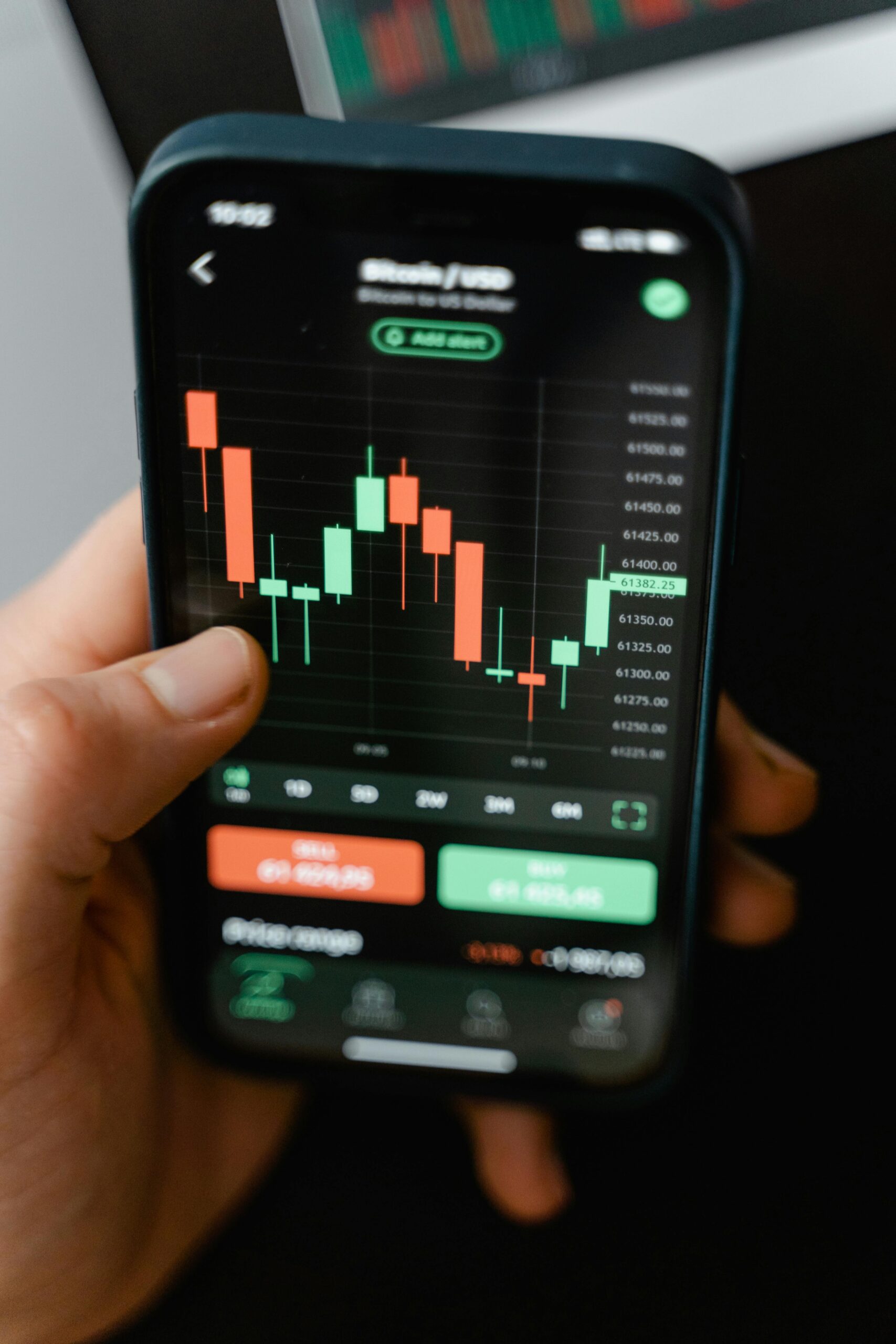
FinTech 2025 Future of Money the way we handle money is changing faster than ever before. In 2025, financial technology the future of money or FinTech 2025 isn’t just disrupting traditional banking; it’s redefining how we save, spend, invest, and transfer money. From AI-driven investment platforms to decentralized finance (DeFi) and instant cross-border payments, the future of money isn’t some distant vision it’s already in our hands.
Consumers now expect speed, security, and personalization in every financial transaction, while businesses demand smarter, data-driven solutions to stay competitive. This rapid evolution is creating a new global financial ecosystem one where banks, startups, and tech giants are all racing to innovate.
In this article, we’ll explore the biggest FinTech trends shaping 2025, the technologies making them possible, and how they’re transforming everyday life for individuals and businesses alike.
In the past decade, we’ve seen the humble bank branch give way to mobile apps, crypto exchanges, robo-advisors, and peer-to-peer lending platforms. Your grandparents may have balanced checkbooks; you probably balance your Venmo, PayPal, or digital wallet instead. The way things are going, The Future of Money Is Already Here might never step into a bank at all.

What Is FinTech, Really?
At its core, FinTech means using technology to improve financial services. But that’s a little broad, so let’s unpack it.
- Traditional Finance: Banks, credit unions, insurance companies, and stock exchanges have existed for centuries. They were built on paper processes, face-to-face interactions, and manual approvals.
- FinTech: Takes those same services and more and makes them faster, cheaper, more accessible, and often more transparent using technology.
This can be as simple as a budgeting app on your phone, or as complex as blockchain-powered decentralized finance (DeFi) platforms.
Some examples you might already use:
- Paying for coffee with Apple Pay or Google Pay.
- Splitting dinner bills on Venmo.
- Sending money abroad via Wise (formerly TransferWise).
- Investing spare change using Acorns or Robinhood.
- Buying cryptocurrency on Coinbase or Binance.
In short: If you’ve moved money without physically handing over cash or filling out a paper form, you’ve already experienced FinTech.
The Origins of FinTech
While the term feels modern, FinTech has roots that stretch back decades. The first wave came in the 1950s with credit cards. Then came ATMs in the 1960s, electronic stock trading in the 1970s, and online banking in the 1990s.
The real explosion happened after the 2008 financial crisis. People lost trust in traditional banks, while smartphones and high-speed internet became part of daily life. This created the perfect storm for tech entrepreneurs to jump into finance — with fresh ideas and fewer old-school restrictions.
Why FinTech Is Booming Now
Several factors have fueled the FinTech surge:
1. Smartphones Everywhere
Billions of people now carry powerful computers in their pockets. This means financial services can reach anyone, anywhere, anytime no bank branch required.
2. Lower Barriers for Startups
Cloud computing, open-source software, and app stores make it cheaper and faster to launch new services.
3. Changing Consumer Expectations
We’ve gotten used to instant results from apps like Uber, Amazon, and Netflix. Why should sending money or applying for a loan still take days or weeks?
4. Global Connectivity
Cross-border payments, remote work, and global e-commerce demand payment systems that are fast and borderless.
5. Regulatory Changes
Some countries have updated their banking laws to encourage innovation, creating “sandboxes” where startups can test products without full licensing.

The Main Categories of FinTech
FinTech is an umbrella term — and under it, you’ll find a variety of sub-industries. Let’s explore the major ones.
1. Digital Payments
Digital payments are the heart of FinTech.
Think PayPal, Stripe, Square, Apple Pay, and even your bank’s own mobile app.
Why it matters:
- Speed: Payments happen in seconds, not days.
- Accessibility: No need to carry cash or even a physical card.
- Global reach: Send money anywhere in the world instantly.
Fun fact: In countries like China, cash is nearly extinct in major cities thanks to Alipay and WeChat Pay.
2. Personal Finance & Budgeting
Apps like Mint, YNAB (You Need A Budget), and Pocket Guard help users track spending, set savings goals, and avoid overdrafts. These tools are replacing the need for personal finance spreadsheets and manual tracking.
3. Lending & Credit
Gone are the days when you needed to walk into a bank, fill out a pile of forms, and wait weeks for a loan decision. FinTech lenders like Lending Club, SoFi, and Upstart can approve loans within hours — using AI to assess creditworthiness, not just a credit score.
4. Investment & Wealth Management
Robo-advisors like Betterment and Wealthfront use algorithms to build and manage investment portfolios at a fraction of the cost of human financial advisors.
Meanwhile, commission-free trading apps like Robinhood have made investing accessible to millions who might never have bought stocks otherwise.
5. InsurTech
Insurance is being disrupted too. Companies like Lemonade use AI for instant quotes and claims, while peer-to-peer models let users pool resources for coverage.
6. Cryptocurrency & Blockchain
This is the most revolutionary (and controversial) corner of FinTech. Blockchain technology allows for decentralized financial systems without central banks. Crypto platforms like Binance and Coin base are just the tip of the iceberg; there’s also decentralized finance (DeFi), NFTs, and smart contracts.

The Benefits of FinTech
FinTech’s rise isn’t just about convenience it’s creating real-world benefits:
- Financial Inclusion
Billions of people worldwide are “unbanked” without access to traditional banking. FinTech can bring them into the economy via mobile accounts and digital payments. - Lower Costs
With fewer middlemen, transaction fees drop, making services more affordable. - Speed & Efficiency
Money moves faster. Loan approvals happen in hours, not weeks. - Personalization
AI-driven platforms can tailor services to individual needs from investment strategies to credit offers. - Transparency
Blockchain and open-banking APIs make it easier to see where your money goes.
Challenges and Risks in FinTech
It’s not all smooth sailing.
- Security Risks: More digital transactions mean more cyberattack targets.
- Regulatory Hurdles: Laws vary from country to country; navigating them can be tough for startups.
- Digital Divide: Not everyone has smartphones or reliable internet.
- Over-Reliance on Tech: What happens if your app goes down or your account gets hacked?
- Crypto Volatility: High rewards can come with high risks.
The Future of FinTech
Looking ahead, FinTech will only get more integrated into our daily lives. Here’s what’s coming:
- AI-Powered Financial Assistants
Imagine a Siri or Alexa that can optimize your savings, investments, and bills automatically. - Biometric Payments
Forget passwords your face, fingerprint, or even heartbeat could authorize payments. - CBDCs (Central Bank Digital Currencies)
Governments are experimenting with digital versions of national currencies. - Embedded Finance
Soon, you might be able to get a loan directly inside an online store’s checkout process. - Sustainable Finance
Apps will help people invest in environmentally friendly projects with full transparency.
How You Can Benefit from FinTech Today
- Download a budgeting app to track and optimize spending.
- Use a high-yield online savings account to earn better interest.
- Try micro-investing platforms to grow wealth gradually.
- Explore reputable crypto exchanges but only invest what you can afford to lose.
- Switch to lower-fee payment processors if you run a business.

Final Thoughts
FinTech isn’t a fad. It’s the natural evolution of money in the digital age. The companies leading this transformation aren’t just making banking faster or payments easier they’re redefining how humans interact with money altogether.
From rural farmers receiving mobile payments in Africa to teenagers investing spare change in stocks from their phones, FinTech’s reach is global and growing.
The future of finance is not in marble-floored bank branches; it’s in the apps we download, the algorithms we trust, and the blockchain networks quietly running behind the scenes.
In other words: The future of money isn’t coming. It’s already here and it fits in your pocket.
Business
The Ultimate Guide to Paid Marketing: Strategies, Benefits, and Best Practices for 2025

Introduction
In the fast-paced digital world of 2025, businesses can no longer rely solely on organic reach to achieve visibility. With the rise of competition and constant algorithm changes, paid marketing has become a crucial part of every successful digital strategy. It enables brands to reach targeted audiences quickly, measure performance accurately, and scale campaigns efficiently.
This comprehensive guide explores everything you need to know about paid marketing from its definition and advantages to the best platforms, strategies, and tools to help you master paid advertising.
What is Paid Marketing?
It refers to any form of digital advertising where businesses pay to display their content or promotions to potential customers. Unlike organic marketing, which depends on unpaid methods like SEO and social media engagement, paid marketing offers immediate visibility.
Paid marketing includes several formats such as:
- Pay-Per-Click (PPC)
- Display Ads
- Social Media Ads
- Video Advertising
- Influencer Marketing (sponsored content)
- Native Ads
In short, paid marketing helps companies promote their products or services through strategically placed advertisements across search engines, websites, and social media platforms.
Why Paid Marketing Matters in 2025
The digital landscape is evolving rapidly, and brands that fail to adapt are often left behind. Here’s why paid marketing is essential today:

- Instant Visibility:
Unlike organic SEO, which takes time, paid marketing delivers instant exposure to your target audience. - Precise Targeting:
Platforms like Google Ads and Meta Ads let advertisers target users based on demographics, behavior, and interests. - Scalability:
You can easily increase your reach or budget to scale your campaigns as your business grows. - Measurable Results:
With detailed analytics, marketers can track ROI, conversion rates, and ad performance in real time. - Brand Authority:
Consistent visibility through paid campaigns builds brand recognition and trust.
Types
Let’s explore the most popular types of paid marketing used by businesses today:
1. Pay-Per-Click (PPC) Advertising
PPC is one of the most common forms of paid marketing. Advertisers pay a fee each time someone clicks on their ad. Platforms like Google Ads and Bing Ads dominate this category.
Advantages:
- Quick visibility on search engines
- Budget control and measurable ROI
- Effective for high-intent keywords
Example: A bakery bidding on “best cupcakes near me” can appear on top of Google results instantly.
2. Social Media Advertising
Social platforms like Facebook, Instagram, TikTok, LinkedIn, and X (Twitter) offer robust advertising tools. These allow brands to target specific audiences with visual and interactive content.
Advantages:
- Highly targeted audience segmentation
- Great for brand awareness
- Supports multiple ad formats (carousel, video, stories)
Example: A fashion brand promoting its new summer collection on Instagram to women aged 18–35.
3. Display Advertising
Display ads are visual banner ads that appear on websites, apps, or videos. They can be static or animated and help in creating brand awareness.
Advantages:
- Strong visual impact
- Wide reach through the Google Display Network
- Excellent for remarketing
4. Video Advertising
Video ads are powerful storytelling tools. Platforms like YouTube, TikTok, and Facebook Watch allow brands to showcase engaging content that connects emotionally.
Advantages:
- High engagement rates
- Strong emotional connection
- Ideal for brand recall and awareness
5. Native Advertising
Native ads blend seamlessly with the content of the platform, offering a less intrusive experience. These ads appear on news sites, blogs, and apps.
Advantages:
- Higher engagement
- Non-disruptive user experience
- Builds trust
6. Influencer and Affiliate Marketing
Collaborating with influencers or affiliates can drive organic-looking paid results. Influencers share sponsored content that promotes a product to their followers.
Advantages:
- Builds credibility
- Access to loyal audience bases
- Great for niche marketing
How Paid Marketing Works
Here’s a simple breakdown of how paid marketing campaigns operate:
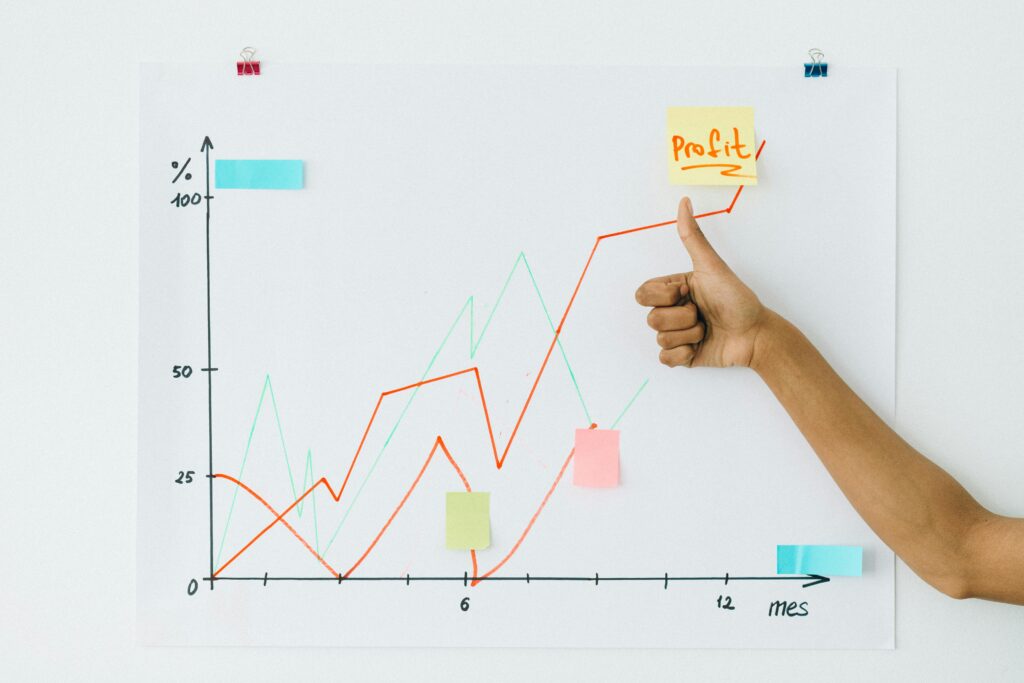
- Set Your Objective:
Define what you want clicks, sales, leads, or engagement. - Choose Your Platform:
Select where your audience spends time (Google, Facebook, LinkedIn, etc.). - Select Target Audience:
Use targeting filters like age, gender, location, interests, and behavior. - Design Your Ad:
Create eye-catching visuals, headlines, and calls to action (CTA). - Set Budget & Bidding:
Decide your daily or campaign budget and choose a bidding strategy (CPC, CPM, CPA). - Launch & Monitor:
Track performance through metrics like impressions, clicks, conversions, and ROI. - Optimize Regularly:
Adjust targeting, creatives, and bids for better performance.
Benefits
Paid marketing offers numerous benefits that make it an essential tool for any modern brand:
- Immediate traffic and leads
- Targeted exposure to relevant audiences
- Data-driven decision making
- Enhanced brand recall
- Scalable and flexible advertising budgets
- Integration with analytics tools for optimization
Top Platforms for Paid Marketing
1. Google Ads
The most popular paid marketing platform, offering both search and display networks. Great for reaching high-intent customers.
2. Facebook & Instagram Ads
Ideal for lifestyle, fashion, and consumer brands aiming for visual engagement.
3. LinkedIn Ads
Perfect for B2B companies targeting professionals and decision-makers.
4. YouTube Ads
Highly effective for storytelling through video marketing.
5. TikTok Ads
A trending platform for short, viral, and creative ad campaigns.
6. Twitter (X) Ads
Good for real-time engagement and trending conversations.
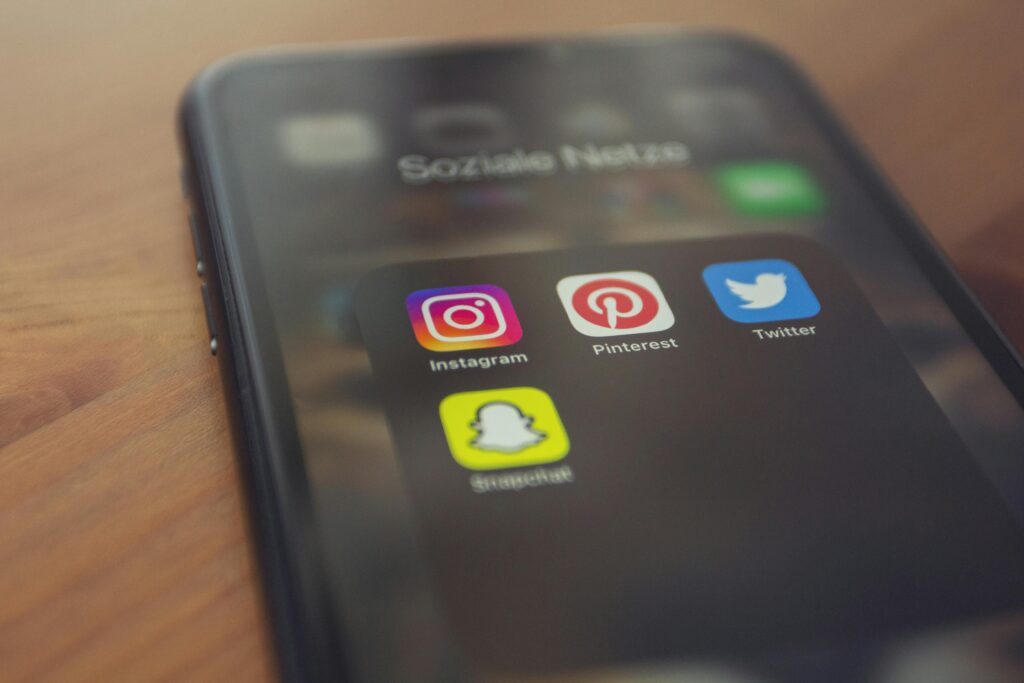
Paid Marketing vs. Organic Marketing
| Aspect | Paid Marketing | Organic Marketing |
|---|---|---|
| Speed | Immediate results | Long-term growth |
| Cost | Requires budget | Free, but time-consuming |
| Control | Full control over visibility | Controlled by algorithms |
| Analytics | Clear ROI tracking | Harder to measure |
| Sustainability | Short-term boost | Long-term visibility |
A smart digital strategy uses both : organic marketing for credibility and paid marketing for reach.
Common Mistakes
Avoid these pitfalls to maximize ROI:
- Ignoring negative keywords in PPC campaigns
- Poor ad creatives or unclear CTAs
- Targeting too broad or too narrow an audience
- Not optimizing landing pages
- Failing to track conversions
- Neglecting A/B testing
Best Practices for Paid Marketing in 2025
- Leverage AI and Automation:
Tools like Google Performance Max and Meta Advantage+ automate bidding and targeting for better efficiency. - Focus on Personalization:
Deliver ads that match user intent and behavior. - Use High-Quality Visuals:
Invest in professional graphics and video production. - Test Everything:
Run A/B tests on creatives, headlines, and CTAs. - Retarget Visitors:
Use retargeting campaigns to re-engage users who visited your website but didn’t convert. - Optimize for Mobile:
Ensure ads and landing pages are mobile-friendly.
Measuring Success: Key Metrics
To understand your campaign’s performance, track the following:
- Click-Through Rate (CTR)
- Conversion Rate
- Cost Per Click (CPC)
- Return on Ad Spend (ROAS)
- Impressions
- Customer Acquisition Cost (CAC)
Future of Paid Marketing
The future of paid marketing is intelligent, data-driven, and personalized. With AI-driven ad targeting, voice search ads, and augmented reality (AR) experiences, paid marketing will continue to evolve. Brands that embrace technology and creativity together will dominate the digital landscape.
Conclusion
Paid marketing is more than just running ads it’s about delivering the right message to the right audience at the right time. When used strategically, it can skyrocket your brand visibility, attract qualified leads, and maximize ROI.
By combining creativity with data analytics, businesses can craft paid marketing campaigns that drive measurable success in 2025 and beyond.
Business
The Power of Email Marketing: A Complete Guide for 2025

Email marketing remains one of the most effective digital marketing strategies despite the rise of social media and new communication channels. With billions of active email users worldwide, businesses can directly reach their audience, build trust, and drive conversions at a relatively low cost. Whether you are a small business owner, a marketer, or an entrepreneur, understanding the fundamentals of email marketing can help you grow your brand and boost revenue.
What is Email Marketing?
Email marketing is the practice of sending targeted emails to a list of subscribers or customers with the aim of promoting products, services, or building long-term relationships. It can include newsletters, promotional campaigns, product launches, and personalized messages that nurture leads through the sales funnel.
Why Email Marketing is Still Relevant in 2025
- Direct Communication : Unlike social media algorithms, emails land directly in a subscriber’s inbox.
- Cost-Effective : Email marketing provides one of the highest ROI in digital marketing, averaging $36 for every $1 spent.
- Personalization : Modern email tools allow businesses to segment audiences and personalize messages for higher engagement.
- Measurable Results : Marketers can track open rates, click-through rates, and conversions easily.
- Automation : With AI and automation tools, businesses can send the right message at the right time.
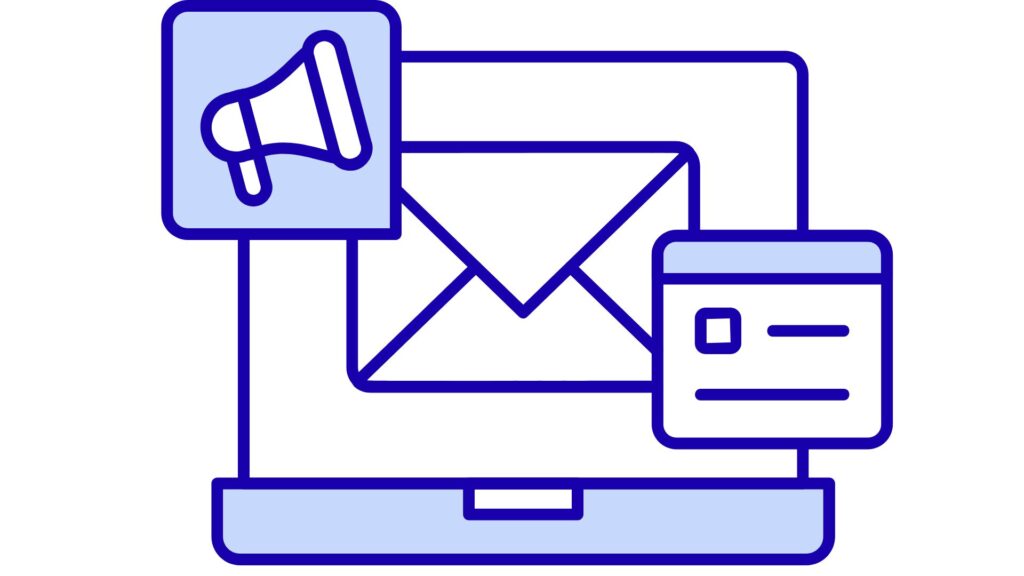
Types of Email Marketing Campaigns
- Welcome Emails – Sent to new subscribers to introduce your brand.
- Newsletters – Regular updates with company news, industry insights, or educational content.
- Promotional Emails – Highlight sales, discounts, or new product launches.
- Abandoned Cart Emails – Remind customers of items left in their cart.
- Re-engagement Emails – Win back inactive subscribers with special offers.
- Transactional Emails – Order confirmations, shipping updates, and receipts.
Best Practices for Successful Email Marketing
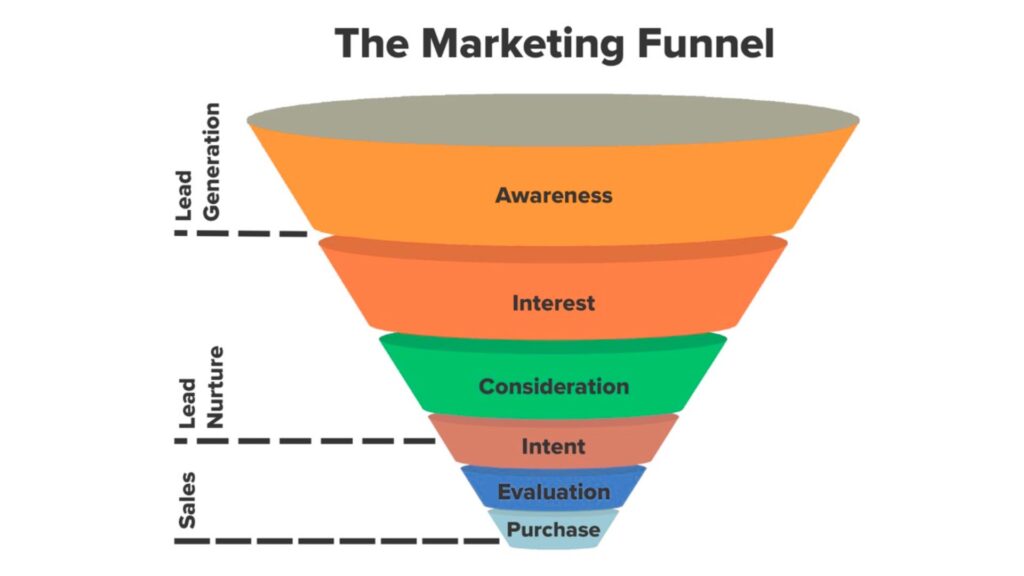
1. Build a Quality Email List
- Use sign-up forms on your website or social media.
- Offer lead magnets like eBooks, discounts, or free trials.
- Avoid buying email lists it harms credibility and deliverability.
2. Segment Your Audience
Different subscribers have different needs. Segmenting helps you send relevant messages—for example, separating new subscribers from loyal customers.
3. Personalize Content
- Use the recipient’s name.
- Recommend products based on past purchases.
- Send personalized birthday or anniversary emails.
4. Optimize Subject Lines
- Keep them short and catchy.
- Use curiosity, urgency, or personalization to increase open rates.
- Avoid spammy words like “FREE!!!” or “Act Now.”
5. Use Mobile-Friendly Designs
Over 60% of emails are opened on mobile devices. Ensure your emails are responsive and easy to read on small screens.
6. Automate Campaigns
Set up workflows for welcome emails, abandoned carts, and follow-ups to save time and maintain consistency.
7. Test and Analyze
Use A/B testing to experiment with subject lines, visuals, and call-to-actions (CTAs). Analyze metrics such as open rates, click-through rates, and conversions to improve campaigns.
Benefits of Email Marketing for Businesses
- Builds stronger customer relationships.
- Increases brand awareness.
- Drives website traffic and sales.
- Provides measurable results.
- Enhances customer retention and loyalty.
Future Trends in Email Marketing (2025 and Beyond)
- AI-Powered Personalization : Smarter algorithms will help businesses send hyper-targeted content.
- Interactive Emails : Expect quizzes, polls, and videos inside emails.
- User-Generated Content : Showcasing customer reviews and photos within newsletters.
- Privacy-Focused Marketing : With stricter data laws, transparency and consent will become more important.
- Integration with Other Channels : Emails will work seamlessly with social media, chatbots, and SMS marketing.
Conclusion
Email marketing continues to be a powerful tool for businesses of all sizes. When done correctly with personalization, segmentation, and automation it not only drives sales but also strengthens customer loyalty. As technology evolves, marketers who embrace trends like AI, interactivity, and privacy will gain a competitive edge.
FAQs About Email Marketing
Q1: How often should I send marketing emails?
It depends on your audience, but 1–4 times a month is a safe range. Consistency matters more than frequency.
Q2: What’s the best day to send emails?
Studies suggest Tuesdays and Thursdays work well, but testing with your own audience is key.
Q3: How can I increase email open rates?
Craft engaging subject lines, personalize content, and avoid spammy phrases.
Q4: Is email marketing suitable for small businesses?
Yes, it’s affordable, scalable, and highly effective even for startups and small companies.
Q5: Do people still read emails with so much social media around?
Absolutely! Emails remain a trusted and professional channel for communication and business promotions.
Business
Trade Agreements: Building Bridges in Global Commerce

Introduction
In today’s interconnected world, no nation can remain isolated when it comes to trade. Countries depend on each other for resources, technology, and markets. This interdependence has given rise to trade agreements, formal arrangements between nations that establish rules and guidelines for exchanging goods, services, and investments. Trade agreements are critical for boosting economic growth, reducing trade barriers, and fostering cooperation across borders.
This blog explores the types of trade agreements, their benefits, challenges, and examples, while also answering frequently asked questions.
What Are Trade Agreements?
It is a contract or treaty between two or more nations that outlines the terms of trade between them. These agreements are designed to:
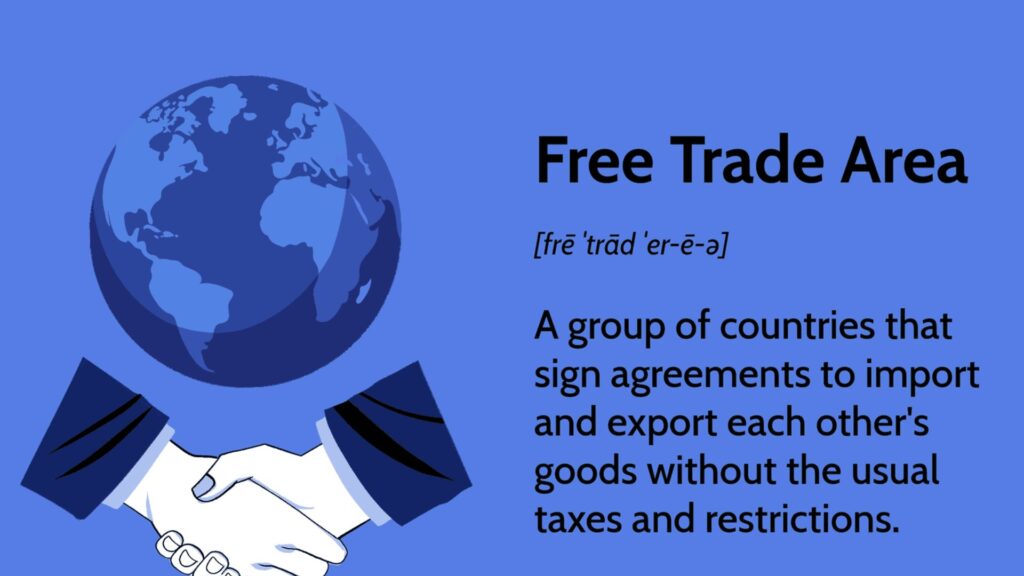
- Reduce or eliminate tariffs, quotas, and duties.
- Simplify customs procedures.
- Promote fair competition.
- Protect intellectual property rights.
- Encourage investments.
Trade agreements are binding under international law and can be bilateral (between two countries) or multilateral (involving multiple countries).
Importance
- Economic Growth : By opening markets, agreements increase exports and imports, creating opportunities for businesses.
- Job Creation : Expanding trade often leads to new industries and jobs in both manufacturing and services.
- Access to Resources : Nations can access raw materials, technology, and goods that may not be available domestically.
- Global Competitiveness : Trade agreements push businesses to innovate and improve efficiency.
- Political Cooperation : Strong economic ties often reduce conflicts and build diplomatic trust.
Types
1. Bilateral Trade Agreements
- Agreements between two nations.
- Example: The U.S.–Mexico Agreement on sugar exports.
2. Multilateral Trade Agreements
- Agreements involving multiple countries.

- Example: The World Trade Organization (WTO) agreements that regulate trade globally.
3. Regional Trade Agreements (RTAs)
- Nations within a specific geographic area form agreements.
- Example: European Union (EU), North American Free Trade Agreement (NAFTA) (now replaced by USMCA).
4. Free Trade Agreements (FTAs)
- Eliminate tariffs and quotas among member nations.
- Example: ASEAN Free Trade Area (AFTA) in Southeast Asia.
5. Customs Unions
- Member nations adopt a common external tariff system.
- Example: The Southern Common Market (MERCOSUR) in South America.
6. Common Market Agreements
- Allow free movement of goods, services, capital, and labor.
- Example: European Single Market.
Key Examples
North American Free Trade Agreement (NAFTA) → USMCA
- Established in 1994 between the U.S., Canada, and Mexico.
- In 2020, replaced by United States–Mexico–Canada Agreement (USMCA).
- Focused on reducing tariffs, protecting intellectual property, and promoting fair labor practices.
European Union (EU) Single Market
- One of the most advanced trade blocs in the world.
- Allows goods, services, capital, and people to move freely across member states.
World Trade Organization (WTO) Agreements
- WTO was established in 1995.
- Provides a platform for negotiating and enforcing global trade rules.
Comprehensive and Progressive Agreement for Trans-Pacific Partnership (CPTPP)
- Involves countries like Japan, Canada, Australia, and Mexico.
- Promotes free trade in the Asia-Pacific region.
African Continental Free Trade Area (AfCFTA)
- Aims to create a single market across Africa.
- Could boost intra-African trade significantly.
Benefits of Trade Agreements
- Lower Costs for Consumers : Reduced tariffs make imported goods cheaper.
- Expanded Business Opportunities : Companies gain access to international markets.
- Encouragement of Innovation : Competition drives businesses to adopt new technologies.
- Foreign Direct Investment (FDI) : Trade agreements attract investors seeking access to larger markets.
- Stronger Diplomatic Ties : Economic interdependence strengthens relationships between nations.
Challenges and Criticisms
- Unequal Benefits : Not all industries or countries benefit equally.
- Job Losses : Certain domestic industries may suffer due to increased imports.
- Dependence on Imports : Over-reliance on foreign goods can weaken local industries.
- Environmental Concerns : Increased production and shipping can harm ecosystems.
- Complex Negotiations : Reaching consensus among multiple countries can take years.
Future of Trade Agreements
With globalization, trade agreements are evolving. Emerging trends include:
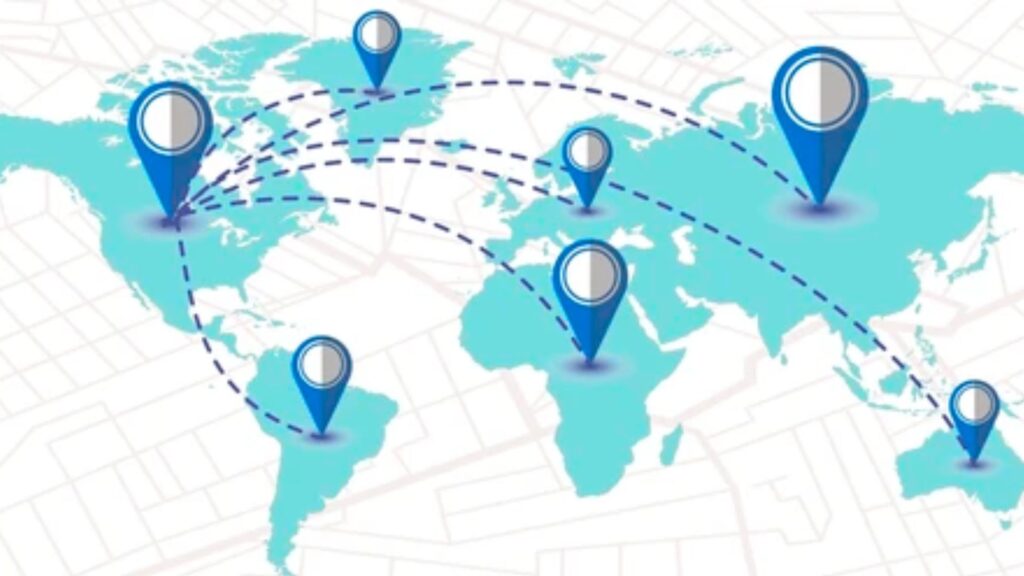
- Digital Trade Agreements : Covering e-commerce, cybersecurity, and data protection.
- Green Trade Policies : Incorporating climate change and sustainability measures.
- Regional Blocs Expansion : More countries joining existing agreements.
- Focus on Fair Trade : Ensuring labor rights, wage standards, and ethical sourcing.
Frequently Asked Questions
1. What is the difference between free trade and fair trade?
- Free trade focuses on reducing tariffs and quotas.
- Fair trade emphasizes ethical practices, fair wages, and sustainability in trade.
2. Do trade agreements benefit all countries equally?
No. Larger economies often benefit more due to stronger industries, while smaller economies may struggle to compete. However, they can gain from access to bigger markets.
3. Why do some people oppose trade agreements?
Opposition comes from concerns about job losses, outsourcing, environmental damage, and loss of local industry competitiveness.
4. How do trade agreements affect consumers?
Consumers benefit from lower prices, more choices, and better quality products. However, domestic producers may face tougher competition.
5. Can trade agreements fail?
Yes. If countries don’t comply with rules or economic conditions change drastically, agreements may collapse or need renegotiation. Example: NAFTA was renegotiated into USMCA.
6. What role does the WTO play in trade agreements?
The WTO acts as a global referee, ensuring nations follow trade rules, settling disputes, and promoting fair competition.
7. How do trade agreements support developing countries?
They provide access to larger markets, encourage investments, and help nations integrate into the global economy.
Conclusion
Trade agreements are the backbone of global commerce. While they come with challenges, their role in shaping economies, creating opportunities, and fostering international cooperation cannot be underestimated. The future of trade will likely be defined by digitalization, sustainability, and inclusivity. For businesses, policymakers, and consumers alike, understanding trade agreements is essential in today’s globalized economy.
-

 Fashion3 months ago
Fashion3 months agoThese ’90s Fashion Trends Are Making a Big Comeback in 2025
-

 Fashion3 months ago
Fashion3 months agoTop Fashion Trends to Follow in August 2025
-

 How-To Tutorials & Troubleshooting3 months ago
How-To Tutorials & Troubleshooting3 months agoHow to Fix Missing Pantone Color Books in Adobe Illustrator 2024-2025 (Free and Easy Method)
-

 Entertainment3 months ago
Entertainment3 months agoTrending Soundtrack: “KPop Demon Hunters”
-

 Entertainment3 months ago
Entertainment3 months agoSquid Game Season 2: Deadlier Games, Deeper Secrets & Darker Drama




